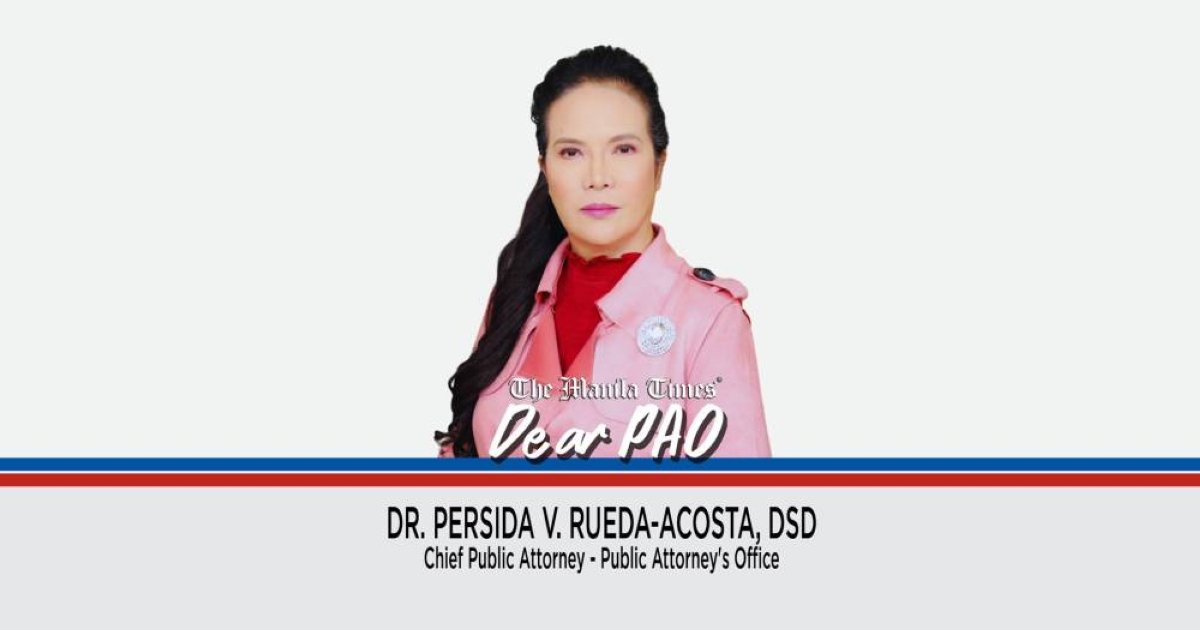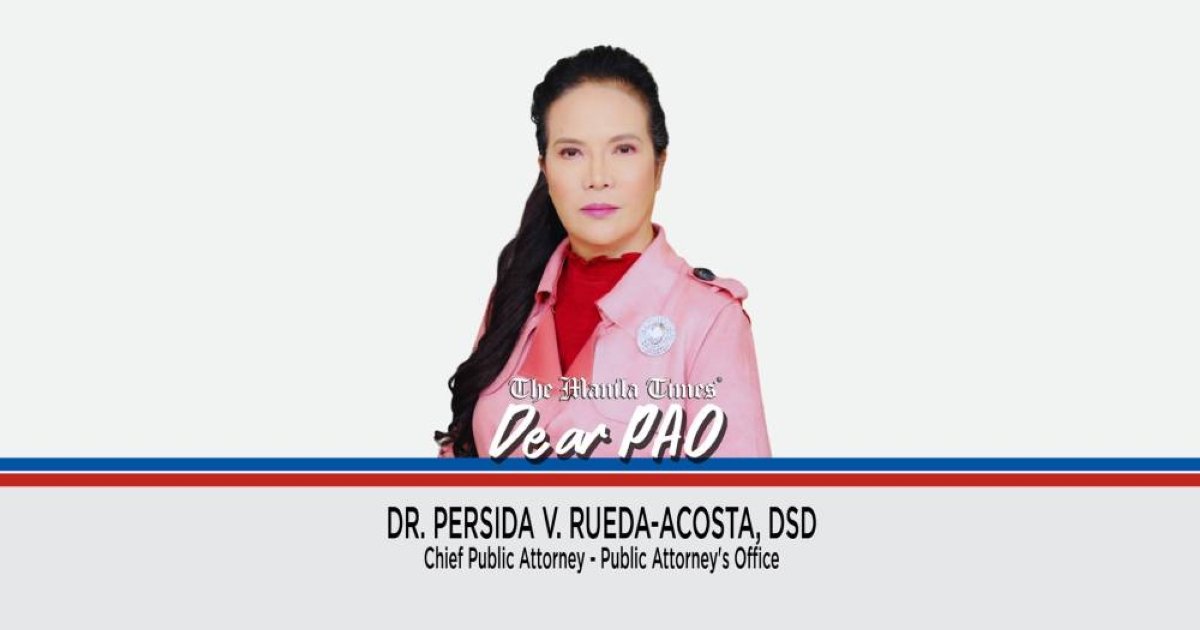Dear PAO,
Why is it that in the drugs case of our neighbor many years ago, aside from him and his lawyer, three other persons were required to witness the inventory — an official from the barangay, a representative from the media and a representative from the DoJ, but in the case now of my friend, only two attended aside from my friend and his lawyer — a barangay official and a representative from the media? Can my friend question the inventory procedure because there was no representative from the DoJ?
Ervin
Dear Ervin,

To afford necessary protection to persons arrested for drug-related violations, the law requires the immediate physical inventory and taking of photograph of the seized illegal drugs and such other items related thereto, which must be done in the presence of law-mandated witnesses. When Republic Act (RA) 9165, otherwise known as the “Comprehensive Dangerous Drugs Act of 2002,” was signed into law on June 7, 2002, the mandated witnesses to the conduct of the inventory are the person/s arrested or from whom said substances or items were confiscated or seized or his/her representative or counsel, a representative from the media and the Department of Justice (DoJ), and any elected public official. To be certain Section 21 (1) of RA 9165 provides:
“Section 21. Custody and Disposition of Confiscated, Seized, and/or Surrendered Dangerous Drugs, Plant Sources of Dangerous Drugs, Controlled Precursors and Essential Chemicals, Instruments/Paraphernalia and/or Laboratory Equipment. – The PDEA shall take charge and have custody of all dangerous drugs, plant sources of dangerous drugs, controlled precursors and essential chemicals, as well as instruments/paraphernalia and/or laboratory equipment so confiscated, seized and/or surrendered, for proper disposition in the following manner:
“(1) The apprehending team having initial custody and control of the drugs shall, immediately after seizure and confiscation, physically inventory and photograph the same in the presence of the accused or the person/s from whom such items were confiscated and/or seized, or his/her representative or counsel, a representative from the media and the Department of Justice (DOJ), and any elected public official who shall be required to sign the copies of the inventory and be given a copy thereof;
“x x x” (Emphasis supplied)
However, it bears stressing that when Republic Act (RA) 10640, which amended Section 21 (1) of RA 9165, was approved on July 15, 2014, significant changes were made, one of which is the mandated witnesses to the inventory. To be specific:
“SEC. 21. Custody and Disposition of Confiscated, Seized, and/or Surrendered Dangerous Drugs, Plant Sources of Dangerous Drugs, Controlled Precursors and Essential Chemicals, Instruments/Paraphernalia and/or Laboratory Equipment. – x x x
“(1) The apprehending team having initial custody and control of the dangerous drugs, controlled precursors and essential chemicals, instruments/paraphernalia and/or laboratory equipment shall, immediately after seizure and confiscation, conduct a physical inventory of the seized items and photograph the same in the presence of the accused or the person/s from whom such items were confiscated and/or seized, or his/her representative or counsel, with an elected public official and a representative of the National Prosecution Service or the media who shall be required to sign the copies of the inventory and be given a copy thereof: Provided, That the physical inventory and photograph shall be conducted at the place where the search warrant is served; or at the nearest police station or at the nearest office of the apprehending officer/team, whichever is practicable, in case of warrantless seizures: Provided, finally, That noncompliance of these requirements under justifiable grounds, as long as the integrity and the evidentiary value of the seized items are properly preserved by the apprehending officer/team, shall not render void and invalid such seizures and custody over said items.
“x x x” (Emphasis supplied)
Accordingly, the inventory procedure that was conducted on the arrest of your friend, as witnessed by him and his lawyer, a barangay official and a representative from the media, may be considered valid notwithstanding the absence of a representative from the DoJ, as the presence of both representatives from the media and the DoJ is not obligatory under the amendatory provision of RA 10640. As can be gleaned from said law, only two witnesses are now required to be present during the conduct of the physical inventory and taking of photograph of the seized items, namely: (1) an elected public official, such as a barangay official; and (2) either a representative from the National Prosecution Service or the media.
We hope that we were able to answer your queries. Please be reminded that this advice is based solely on the facts you have narrated and our appreciation of the same. Our opinion may vary when other facts are changed or elaborated on.
Editor’s note: Dear PAO is a daily column of the Public Attorney’s Office. Questions for Chief Acosta may be sent to [email protected]










